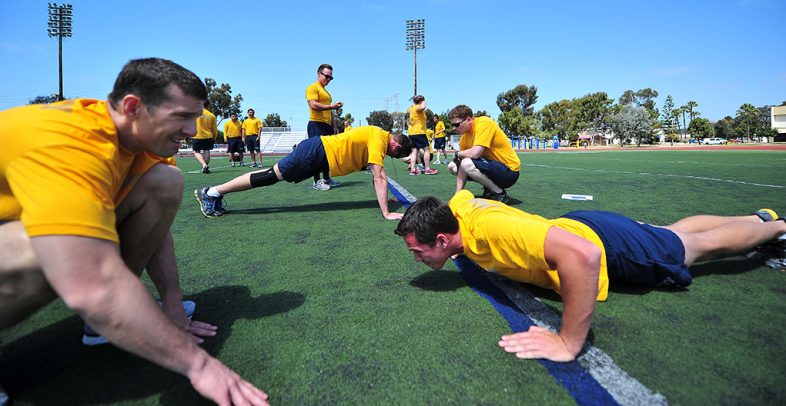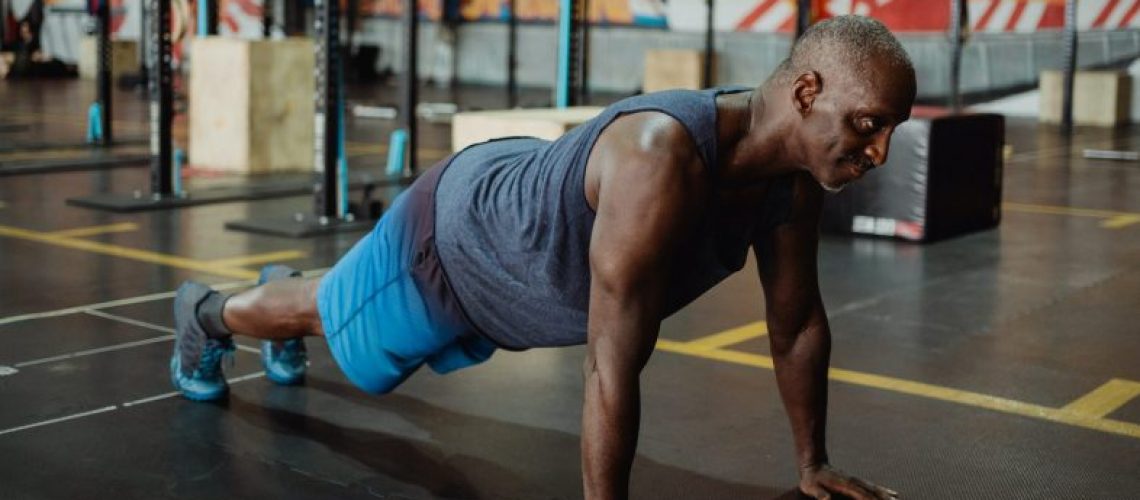How Many Pushups Should I Be Able to Perform?
Pushups are one of the most time tested forms of exercise. With proper form, this exercise can be effective in shaping the pectoral muscles as well as strengthening the shoulders. More than exercise intensity, the number of pushups also determines the extent of its effects on the body.
Based on the averages from the researches of Dr. Lawrence Golding and the Canadian Society for Exercise, men and women aged 20-40 years old should be able to do 21-23 pushups and 15-16 pushups, respectively. Since pushup performance decreases with age, men and women in their late 50s to early 60s can only do as much as 10-16 pushups and 5-12 pushups, respectively.
This article will explain the various factors that affect pushup performance. It will also show the various fitness and strength standards for pushups, both through the perspective of kinesiologists and a fitness expert. Lastly, it will also discuss how pushup tests can provide a more individualized assessment to determine the appropriate number of pushups for an individual.
Factors Affecting Pushup Performance

The main factors that can affect the capability to do pushups are gender, age, height, and weight. Both men and women are capable of doing pushups. However, the difference in musculature allows men to do more pushups than women. Still, with adequate training, some women can do more pushups than men.
In terms of age, people during their physical prime, which is usually in their 20s, can do more pushups than any other age bracket. Age is a crucial determining factor as shown by the downward trend in the ability to do pushups as a person gets older. However, individuals who train regularly even in their 40s are capable of doing more pushups than average individuals in their prime.
Height and weight are also crucial determining factors because taller individuals usually have longer limbs, which affect the mechanics of their pushups. Taller individuals tend to have a greater range of motion in their pushups than shorter individuals. Moreover, overweight individuals tend to have a harder time doing pushups than leaner individuals because of the lack of muscle to carry the body weight through the lifting motion.
Other important factors that affect pushup performance are lifestyle and diet. Pushups and cardiovascular health are interrelated because pushups engage multiple large and small muscles which pressure the heart to distribute oxygen into these muscles. Sedentary lifestyle and its lack of exercise for the heart can cause lesser performance.
Another factor that can affect pushup performance is the type of pushup. Pushups vary depending on the width of the arms and its distance to the shoulder. Normal pushups start with the arms at shoulder length while the ankle and the shoulder form a straight line. The diamond and wide arm pushups, on the other hand, alter the placement of the hands to target other muscles areas aside from the bicep and chest. The diamond pushup targets the triceps, while the wide arm pushups engage the shoulder muscles.
The placement of the hand on the floor during pushups can either increase or decrease pushup performance because the different types of pushups can expose muscular imbalances. Some people might do well in normal pushups but struggle with wide arm or diamond pushups because of under-developed tricep and shoulder muscles.
Different Standards for Pushups
Kinesiologists and fitness experts have different perspectives on the right standards for pushup performance. While they both account for the age and gender factors in pushup performance, the volume of pushups they recommend for individuals in certain categories can vary.
Dr. Lawrence Golding is a kinesiology professor at the University of Nevada, Las Vegas. He stated that, on average, people aged 20-40 years old should be able to do 10-30 pushups. He further breaks this down into age and gender brackets. He showed that men who are 20-40 years old should be able to do at least 13-29 pushups, while women in the same age bracket should be able to do 10-22 pushups.
The Canadian Society for Exercise Physiology (CSEP) also has its standards for pushup performance based on age and gender. In the same age bracket, 20-40 years old, they stated that men should be able to do 17-28 pushups, while women should be able to do 13-20 pushups.
In both scientific accounts, they showed that pushup performance decreases through age. Golding showed that at age 60 and higher, pushup performance dips to 6-16 pushups for men and 5-12 pushups for women. CSEP’s analysis offered similar results: 8-10 pushups for men and 5-11 pushups for women.
In terms of a singular number to pinpoint the number of pushups for both men and women, the New York Times wrote that the average number of pushups for people at 40 years old is 27 pushups for men and 16 pushups for women. These can be good benchmarks to follow, and it does not veer away much from Dr. Golding’s and CSEP’s recommendations.
Pushup Tests

(U.S. Navy photo by Mass Communication Specialist Seaman Christopher Pratt/Released)
Fitness and strength standards are often created through averaging performance from representative populations of certain demographic categories. These standards should therefore not be taken as a benchmark for performance, especially for individuals who do not possess average strength and endurance for their segment of the population.
Pushup tests allow a person to assess his/her pushup performance and where to start in terms of the number of pushups before progressing further. Jim White, an owner of a fitness and nutrition studio, stated that doing as many repetitions as possible in one set can help determine the number of pushups possible for several sets.
Managing less than 25 pushups means an individual can only do 50-75 pushups for 2-4 sets, while managing within 25-50 pushups means 75 to 150 pushups for 2-4 sets. Lastly, doing more than 50 pushups continuously means 150-250 pushups in 2-4 sets.
Another pushup test is the one-minute pushup test where-in an individual will do pushups with proper form continuously for one minute. This type of pushup test is mostly done in police academies and military disciplines. The resulting number can be the individual’s starting point for the total number of pushups per day for 2-4 sets for 2 weeks before progressing into more repetitions or completing the total number of pushups in a lesser number of sets.
However, without pushup tests, a good rule-of-thumb is to start with 5 pushups with perfect form and mechanics per set with a total of 40-50 pushups in 5-10 sets separated with 1-minute rests. Adding more on the total repetitions every week will keep the body progressing in strength and endurance.
Conclusion
Several factors affect pushup performance, with age and sex as the primary determining factors. Fitness standards use these two categories to attain average performance, which is often used as benchmarks for fitness performance. However, these fitness standards should only serve as a goalpost to drive commitment to become stronger rather than an evaluating tool for fitness. Self-assessment by doing pushups until form breaks down is a better method to determine the individualized starting number for the total number of pushups per day across several sets.



